Odyssey
Member
- Thread Author
- #1
Preamble:
If there is ever a time that my two adult kids wanted to file a motion for a competency hearing, Exhibit "A" would be the Audio invoices for the items I have spent in this hobby over the last several years.
It's a bitch when you try to achieve and move performance of this hobby in the flat part of the bell curve. Say two or three standard deviation's away from the median of Audio performance.
Minor changes in the Y axis of Audio performance entail tremendous expenditures of money on the X axis of the curve.
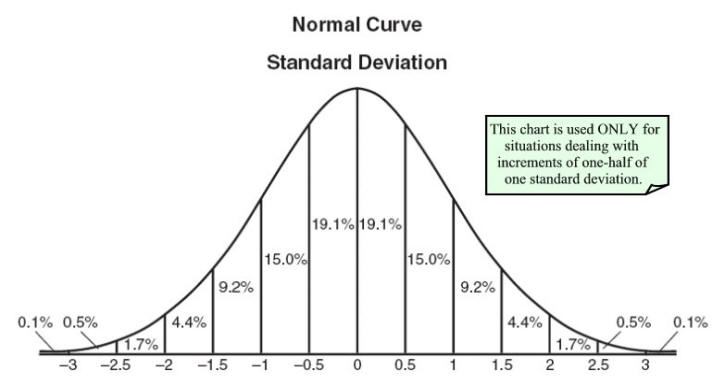
The Adventure Begins:
Where my journey has taken me over the last 18 months or so is the annihilation of noise in my audio system. I've come to believe that the best way for music to find its way out of your system is in the elimination of noise.
About six months ago I was able to in-home demo the Strom tank battery unit. This particular unit was a Proto type and was not functioning entirely correctly at the time of my demo. But I did learn some things.



It's not just RFI, EMI, Amplitude modulation or other nasties that ride on the powerline into our homes. There is also harmonic distortion on the powerlines that can disturb the sine wave. Most of us reading this are familiar with these disturbances that can pollute the Mains supply.


One of the things I learned about my main listening room is the amount of harmonic distortion or THD+N that is typically present. You'll see in the attached read out above that it is approximately 4.5% using the Audio Precision portable testing unit loaned to me by a friend in the pro audio industry. This reading was not exactly a disaster but the lower the number the better. Hospitals and major airports shoot for a number below 2%.
The Strom tank did a great job in reducing this number to near zero while running front end components. Add an amplifier to the load and the number did increase. It's my understanding that this manufacturer is working on a solution for adding an amplifier to a later version.
Later I tried another passive Power conditioner that reduces certain types of noise and this led to an improvement in my system. The only problem was that it did so in a non-linear way. That is, that it reduce certain types of noise by a large DB amount but only between certain frequencies.


Fast forward to the time of my Raidho D5 upgrade. Through my dealer in Chicago, Tyler Mueller of Next Level AV, Lars and Michael came to my house personally to perform the upgrade which involves changing out certain drivers and adding some proprietary technology inside the cabinet.
The .1 upgrade for the D5 was very substantial unto itself. The new midrange driver has twice the rise time and is now more coherent with the ultrafast planer magnetic tweeter and sounds phenomenal to my ears.
After the upgrade I was introduced to the DTC technology. Wire by wire, the new power cords then the interconnects and lastly the speaker cables were inserted. For me this was a "get familiar" session with the DTC technology. I have learned that before making a major investment it is best to spend an extended time with what you're considering.

Of course I did get stuck on the price. But my Raidho/Ansuz dealer offered to loan me the full loom. Of course when he handed me the DTC loom I told him I was only interested in maybe the power cords. He encouraged me to insert everything and then pull it out.
I started by inserting the power cords in my Austin listening room and this led to a very nice incremental change in the sound.
However it wasn't until I got back to Chicago with the upgraded D5.1's that I plugged in the rest of the loom.
This was my El Dorado moment. That is for me the summit of my noise reduction experience. By my understanding what the DTC cables do is eliminate the forms of noise described above by shifting them out of the audible band up above 100,000 Hz. I have no idea how the designer achieves this. But in my listening experience it is beft of the best sound in my system I have ever heard. Less noise leads to more music, blacker backgrounds and more dynamic headroom. It is like a sound I have never heard at any other audio show or any other audiophiles home. It is quite pleasing to my ears and my taste.
I have become format agnostic. It doesn't matter to me if the file is PCM, DSD, MQA or otherwise. Whatever the format the sound is extremely musical. Even older recordings seem to have new life with the noise removed.
I ususally only listen to music in the 70-80 dB range. I'm finding now I can turn the volume up well into the 80's with 95 dB peaks and no auditory distress. A peak I rarely ever achieved before. I no longer have to ride the volume control with classical music because the triple fortissimo passages no longer bother my ears with the grunge gone.
I am very please with the dTC technology. I'd say it is the single best improvement I've made to my system.
If there is ever a time that my two adult kids wanted to file a motion for a competency hearing, Exhibit "A" would be the Audio invoices for the items I have spent in this hobby over the last several years.
It's a bitch when you try to achieve and move performance of this hobby in the flat part of the bell curve. Say two or three standard deviation's away from the median of Audio performance.
Minor changes in the Y axis of Audio performance entail tremendous expenditures of money on the X axis of the curve.

The Adventure Begins:
Where my journey has taken me over the last 18 months or so is the annihilation of noise in my audio system. I've come to believe that the best way for music to find its way out of your system is in the elimination of noise.
About six months ago I was able to in-home demo the Strom tank battery unit. This particular unit was a Proto type and was not functioning entirely correctly at the time of my demo. But I did learn some things.
It's not just RFI, EMI, Amplitude modulation or other nasties that ride on the powerline into our homes. There is also harmonic distortion on the powerlines that can disturb the sine wave. Most of us reading this are familiar with these disturbances that can pollute the Mains supply.
One of the things I learned about my main listening room is the amount of harmonic distortion or THD+N that is typically present. You'll see in the attached read out above that it is approximately 4.5% using the Audio Precision portable testing unit loaned to me by a friend in the pro audio industry. This reading was not exactly a disaster but the lower the number the better. Hospitals and major airports shoot for a number below 2%.
The Strom tank did a great job in reducing this number to near zero while running front end components. Add an amplifier to the load and the number did increase. It's my understanding that this manufacturer is working on a solution for adding an amplifier to a later version.
Later I tried another passive Power conditioner that reduces certain types of noise and this led to an improvement in my system. The only problem was that it did so in a non-linear way. That is, that it reduce certain types of noise by a large DB amount but only between certain frequencies.
Fast forward to the time of my Raidho D5 upgrade. Through my dealer in Chicago, Tyler Mueller of Next Level AV, Lars and Michael came to my house personally to perform the upgrade which involves changing out certain drivers and adding some proprietary technology inside the cabinet.
The .1 upgrade for the D5 was very substantial unto itself. The new midrange driver has twice the rise time and is now more coherent with the ultrafast planer magnetic tweeter and sounds phenomenal to my ears.
After the upgrade I was introduced to the DTC technology. Wire by wire, the new power cords then the interconnects and lastly the speaker cables were inserted. For me this was a "get familiar" session with the DTC technology. I have learned that before making a major investment it is best to spend an extended time with what you're considering.

Of course I did get stuck on the price. But my Raidho/Ansuz dealer offered to loan me the full loom. Of course when he handed me the DTC loom I told him I was only interested in maybe the power cords. He encouraged me to insert everything and then pull it out.
I started by inserting the power cords in my Austin listening room and this led to a very nice incremental change in the sound.
However it wasn't until I got back to Chicago with the upgraded D5.1's that I plugged in the rest of the loom.
This was my El Dorado moment. That is for me the summit of my noise reduction experience. By my understanding what the DTC cables do is eliminate the forms of noise described above by shifting them out of the audible band up above 100,000 Hz. I have no idea how the designer achieves this. But in my listening experience it is beft of the best sound in my system I have ever heard. Less noise leads to more music, blacker backgrounds and more dynamic headroom. It is like a sound I have never heard at any other audio show or any other audiophiles home. It is quite pleasing to my ears and my taste.
I have become format agnostic. It doesn't matter to me if the file is PCM, DSD, MQA or otherwise. Whatever the format the sound is extremely musical. Even older recordings seem to have new life with the noise removed.
I ususally only listen to music in the 70-80 dB range. I'm finding now I can turn the volume up well into the 80's with 95 dB peaks and no auditory distress. A peak I rarely ever achieved before. I no longer have to ride the volume control with classical music because the triple fortissimo passages no longer bother my ears with the grunge gone.
I am very please with the dTC technology. I'd say it is the single best improvement I've made to my system.
Attachments
-
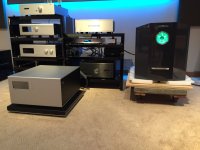 Strom system front.jpg598.4 KB · Views: 232
Strom system front.jpg598.4 KB · Views: 232 -
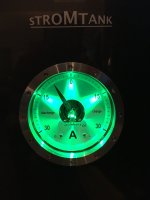 Stromtank dial green mode.jpg488.1 KB · Views: 225
Stromtank dial green mode.jpg488.1 KB · Views: 225 -
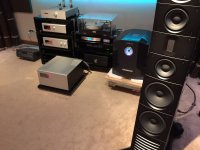 Strom upper view.jpg587.6 KB · Views: 231
Strom upper view.jpg587.6 KB · Views: 231 -
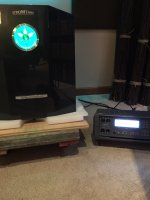 Strom and Audio Precision.jpg595.4 KB · Views: 227
Strom and Audio Precision.jpg595.4 KB · Views: 227 -
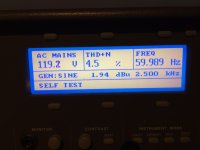 Audio Precision THD+N reading.jpg481.6 KB · Views: 228
Audio Precision THD+N reading.jpg481.6 KB · Views: 228 -
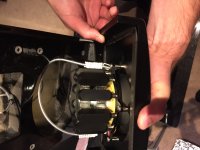 mid range driver.jpg517.5 KB · Views: 229
mid range driver.jpg517.5 KB · Views: 229 -
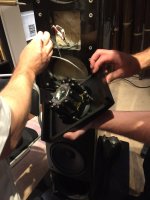 mid range driver II.jpg562.9 KB · Views: 228
mid range driver II.jpg562.9 KB · Views: 228


